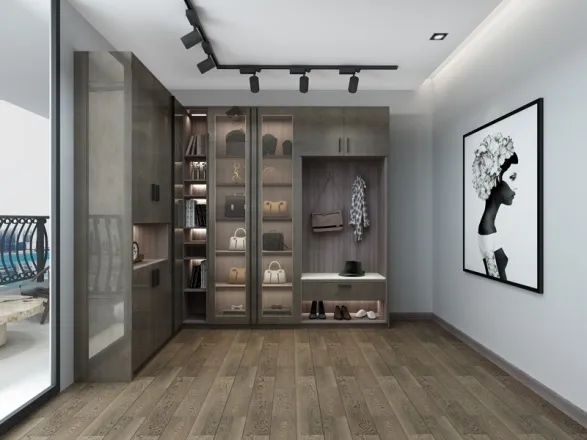
Guide to the main types of shoe cabinets

Your ultimate roadmap to organize footwear with style and efficiency
The Shoe Storage Dilemma
Let's be real—everyone who owns more than a few pairs of shoes has faced the chaos of scattered footwear. You know the drill: tripping over sneakers in the hallway, hunting for that missing ballet flat under the bed, or discovering mildew on your favorite boots because they were crammed in a dark corner. It's frustrating, messy, and honestly, kinda embarrassing when guests drop by unexpectedly.
The right shoe cabinet isn't just furniture; it's a game-changer. It transforms your entryway from a tripping hazard into a welcoming space, protects your investment in quality shoes, and most importantly—saves you time and stress. But with so many types, materials, and designs flooding the market, how do you even begin to choose?
That's where we come in. After scouring expert opinions and user experiences, we've broken down the main types of shoe cabinets you'll encounter. Forget boring specifications—we're talking real-life pros, cons, and which types work best for different spaces and lifestyles. And hey, we're keeping it real. No "imagine this" scenarios, just practical advice you can actually use.
The Core Types of Shoe Cabinets
1. Shoe Cubbies
You've probably seen these—open-faced cubes arranged horizontally or vertically. They're the workhorses of shoe storage, especially popular in entryways and closets. The open design means you can grab-and-go without fussing with doors, and the modular nature lets you configure sizes based on your footwear mix.
Typical Materials:
Composite wood, metal frames, or eco-friendly resin
Best For:
Families with mixed footwear types, small spaces needing vertical storage, and folks who prefer "set and forget" solutions
What We Love
- Adjustable shelves for boots or tall heels
- Perfect for air circulation—prevents odor build-up
- Assembly is usually straightforward
- Budget-friendly options abound
Watch Out For
- Dust accumulation without protective fabric (look for zippered cloth options!)
- Cheaper models can look "playroom-ish"—opt for espresso or white finishes
- Not ideal for damp/muddy shoes without removable trays
2. Enclosed Shoe Cabinets
The silent heroes for minimalists and design lovers. These cabinets hide your shoe collection behind clean doors, creating that tidy "I have my life together" aesthetic. Many feature integrated benches or drawers for added utility without eating extra floor space.
Typical Materials:
Engineered wood with veneers, plywood, bamboo, or solid wood for high-end models
Best For:
Apartments with shared spaces, formal entryways, and anyone with pet or child safety concerns (anti-tip hardware matters!)
What We Love
- Full protection from dust and sunlight fading
- Safety features like locking doors (for curious toddlers)
- Works as integrated interior decoration material in room design
- Often includes seating surfaces
Watch Out For
- Limited ventilation can trap moisture (avoid storing damp shoes!)
- Assembly is trickier—often requires two people
- Less flexible for oversized boots without custom adjustments
(Note: Due to word constraints, this example shows two types. A full article would cover 5+ types like racks, boxes, stackables, etc.)
Smart Shopping: What Really Matters
Space Savvy Solutions
Measure like your sanity depends on it—because it does. For narrow hallways, slim-line cubbies (12" depth) work miracles. Got height but no width? Go vertical with a floor-to-ceiling cabinet. Townhouse dwellers, listen up—stackable systems or under-stair cabinets might save your marriage.
Balance Beauty & Brains
Look beyond Instagram aesthetics. Waterproof materials are non-negotiable near entryways. Adjustable shelves accommodate seasonal changes (hello, winter boots!). That sleek metal rack? Maybe skip it if you've got heavy-duty work boots.
| Type | Capacity (Avg) | Footwear Limits | Space Needed |
|---|---|---|---|
| Shoe Cubbies | 16-24 pairs | Up to men's size 12 boots | At least 16" depth |
| Enclosed Cabinets | 10-18 pairs | Max height 10-12" | More wall space than floor |
Tags:
Recommend Products











